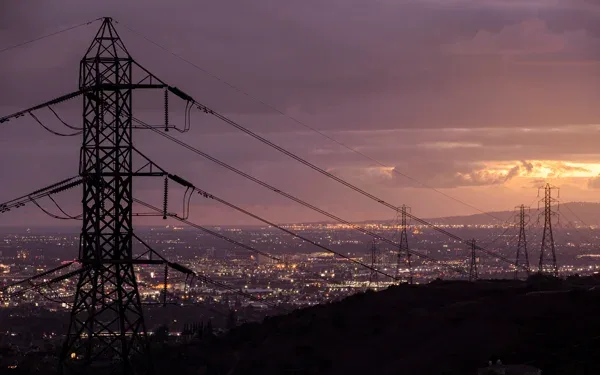The growing importance of winter readiness and the outlook for 2025

The California Independent System Operator (ISO) has been working with its partners across the West to plan for winter readiness in ways that were once primarily the purview of summer reliability planning.
Last January’s cold spell in the Pacific Northwest, the historic February 2021 extreme cold in Texas and new federally approved regulations on winter reliability activities have significantly influenced our enhanced winter planning. Additionally, we have intensified our winter readiness activities to ensure that as the ISO expands its regional markets and services, we are fully supporting our partners in the West to maintain reliability during the cold-weather months.
These efforts complement our annual focus on summer reliability activities, which are crucial due to the peak electricity demand in the California Independent System Operator balancing area during that season.
Forecasting
ISO forecasters analyze various models of summer precipitation and heat, sharing that information with grid operators and stakeholders throughout the West. Each spring, our Resource Assessment and Planning team publishes a detailed analysis of the grid’s expected summer performance based on resources available to generate electricity, including hydroelectric power from both California and the Pacific Northwest, which exports surplus power when available.
We coordinate closely with state government partners and convene a roundtable discussion with utility executives and other experts about how conditions look heading into summer. We also run through simulated scenarios during tabletop exercises so when there is a grid event affecting reliability, everyone can work from the same playbook to address potential issues before they cause problems. Many of those same strategies are now applied to winter planning for the reasons stated above.
Coordination
We recently held detailed meetings with scheduling and reliability coordinators served by the ISO, with participants in the ISO’s Western Energy Imbalance Market (WEIM) and in the ISO balancing authority area, to make sure everyone is current on the latest forecasts and expectations around winter readiness.
Among the many key topics covered were:
- Weather forecasting for December through February;
- Western hydro outlook;
- Natural gas supplies for California and the broader West, which still play a crucial role in meeting demand, particularly during winter;
- Information about outages and transmission or generator maintenance that could affect operations, and;
- Transmission availability.
We walked participants through the ISO’s Emergency Playbook, which delineates a series of coordinated communication protocols for extreme weather year-round. We discussed what triggers the different Energy Emergency Alerts that can be called during stressed grid conditions and what each level says about system operations.
We described the other tools the ISO and its markets can use when supplies get tight, including orders for Restricted Maintenance Operations and how market entities can opt into the still relatively new Assistance Energy Transfer program. Known as AET, the program enables WEIM entities to provide reliability benefits to balancing authority areas that need additional capacity to meet demand.
Preparation
Inside the ISO, we recently conducted a winter readiness exercise for 2024 with our Joint Information Center, which includes a dedicated communications and coordination team that is deployed when the grid is stressed. Participants received information in real time about a severe weather event. They went through steps each would take to ensure the ISO communicates effectively with our many partners and stakeholders.
Now that winter is upon us, I am happy to report that the system is currently looking good for the cold-weather season.
- Gas supplies are above average;
- Transmission paths are expected to be fully available to support transfers across the region, allowing market participants and balancing areas to move energy as needed, and;
- The resource adequacy picture within the ISO is healthy, showing sufficient supply to meet firm demand and the obligations for supply.
Our forecast team reports are currently expecting near to slightly above normal temperatures across California and the Desert Southwest from December through February, with the highest likelihood of above normal temperatures for the areas furthest south. In the Pacific Northwest and Northern Central Regions, there is a greater potential for below normal temperatures, so the team will of course be closely monitoring those conditions.
After a wet first half of November that put Northern California above normal for rainfall through early December, precipitation across California slowed. For the remainder of December, we expect increased precipitation for the Pacific Northwest and Northern California. Between now and February, forecasters predict a risk of below normal precipitation for the far southern Desert Southwest and a higher likelihood of above normal precipitation for the Pacific Northwest and northern Central regions.
California is situated between these two regions, and faces equal chances that it may see above or below normal precipitation, leading to greater uncertainty. Current reservoir conditions across California and the West are at about half capacity, so if the Pacific Northwest has an above normal winter for precipitation, that could help that region recover some of its hydro storage. The Desert Southwest is expected to remain under a greater risk for continued low hydro availability.
Overall, the ISO is prepared and has been working hard to make sure all the customers and market entities we serve in California and the broader West are ready for winter. Mother Nature often has her own plans and weather predictions are never 100 percent accurate, regardless of what season we’re in. But with all of the work and preparation, we are going into the winter of 2024-2025 in good shape.


